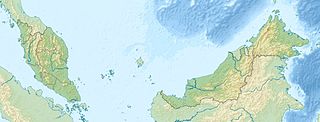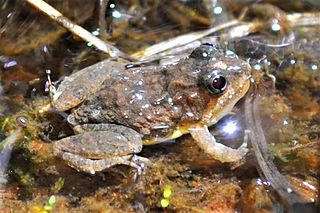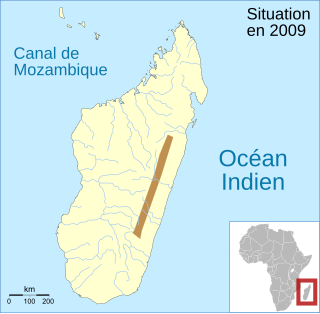 W
WAcanthixalus sonjae is a species of frog in the family Hyperoliidae. It is found in south-western Ivory Coast and in south-western Ghana, and possibly in adjacent Liberia.
 W
WAplastodiscus ibirapitanga is a species of frog in the family Hylidae. Its natural habitats are subtropical or tropical moist lowland forests, subtropical or tropical moist montane forests, and rivers. It tolerates some habitat modification and is not considered threatened.
 W
WAplastodiscus sibilatus is a species of frog in the family Hylidae. It is endemic to northeastern Brazil and is known from central-eastern Bahia and Alagoas. The specific name sibilatus is derived from the Latin sibilus meaning "whistle", in allusion to the characteristic call of the species.
 W
WBilbo's rain frog is an amphibian species in the family Brevicipitidae, endemic to South Africa. It was named after Bilbo Baggins, because the scientist who discovered it used to read The Hobbit to his children. Its natural habitats are temperate grassland and edges of wood plantations. The species, threatened by habitat loss, is listed as Near Threatened in the IUCN Red List of Threatened Species.
 W
WBoana exastis is a species of frog in the family Hylidae. It is endemic to the Northeast Region of Brazil and has been recorded from Bahia, Alagoas, and Pernambuco.
 W
WBokermannohyla lucianae is a species of frogs in the family Hylidae.
 W
WChiasmocleis cordeiroi is a species of frog in the family Microhylidae. It is endemic to Bahia in eastern Brazil. It is known from Camamu, its type locality, and from few other localities on both sides of the De Contas River. The specific name cordeiroi honors Paulo Henrique Chaves Cordeiro, a Brazilian biologist. Common name Cordeiro's humming frog has been coined for this species.
 W
WChiasmocleis crucis is a species of frog in the family Microhylidae. It is endemic to Bahia in eastern Brazil. It is known from Camamu, its type locality, and from the Serra Bonita Private Reserve of Natural Heritage in Camacan/Pau Brasil. The specific name crucis honors Carlos Alberto Gonçalves da Cruz, a Brazilian herpetologist.
 W
WChoerophryne allisoni is a tiny species of frog in the family Microhylidae. It is endemic to Papua New Guinea and only known from its type locality, Mount Sisa in the Southern Highlands Province. The specific name allisoni honours Allen Allison, an American herpetologist. Common name Allison's mountain frog has been coined for this species.
 W
WGephyromantis salegy, commonly known as the Abolokopatrika Madagascar frog, is a species of frog in the family Mantellidae. It is endemic to Madagascar. Its natural habitats are subtropical or tropical moist lowland forests and subtropical or tropical moist montane forests. It is threatened by habitat loss.
 W
WHyloscirtus tapichalaca is a species of frog in the family Hylidae. It is endemic to Ecuador and only known from the vicinity of its type locality in the Tapichalaca Biological Reserve, Zamora-Chinchipe Province. It is named after the type locality, which is a reserve owned by the Fundación de Conservación Jocotoco. Hyloscirtus tapichalaca belongs to the Hyloscirtus larinopygion group, although its placement with the group is uncertain; it may be the sister taxon of all other species in the group.
 W
WKalophrynus eok is a species of frog in the family Microhylidae. It is endemic to Borneo and currently only known from its type locality in the Kelabit Highlands of Sarawak, Malaysia, but presumably, it also occurs in the adjacent Kalimantan, Indonesia. The specific name eok is Kelabit for "tiny" and refers to the small size of this species. Common names eok sticky frog and small Bario sticky frog have been coined for it.
 W
WMegaelosia apuana is a species of frog in the family Hylodidae. It is endemic to Brazil. Its natural habitats are subtropical or tropical moist montane forest and rivers. It is threatened by habitat loss.
 W
WOreophryne kapisa is a species of frog in the family Microhylidae. It is endemic to the Indonesian islands Biak and Supiori, northwest of New Guinea. Common name Kapisa's cross frog has been proposed for it.
 W
WPhyllodytes edelmoi is a species of frog in the family Hylidae endemic to Brazil. Its natural habitats are subtropical or tropical moist lowland forests and rocky areas. It is threatened by habitat loss.
 W
WPlatypelis mavomavo is a species of frog in the family Microhylidae. It is endemic to Madagascar. Its natural habitats are subtropical or tropical moist lowland forests and subtropical or tropical moist montane forests. It is threatened by habitat loss.
 W
WPlatypelis tetra is a species of frog in the family Microhylidae. It is endemic to Madagascar. Its natural habitats are subtropical or tropical moist lowland forests, subtropical or tropical moist montane forests, and heavily degraded former forest. It is threatened by habitat loss.
 W
WPlethodontohyla mihanika is a species of frog in the family Microhylidae. It is endemic to Madagascar. Its natural habitats are subtropical or tropical moist lowland forests, subtropical or tropical moist montane forests, and heavily degraded former forest.
 W
WPseudopaludicola canga is a species of frog in the family Leptodactylidae. It is endemic to Brazil. Its natural habitats are subtropical or tropical seasonally wet or flooded lowland grassland, freshwater marshes, and intermittent freshwater marshes.
 W
WThe purple frog is a frog species belonging to the family Sooglossidae. It can be found in the Western Ghats in India. Names in English that have been used for this species are purple frog, Indian purple frog, or pignose frog. Although the adult frog was formally described in October 2003, the taxon was recognized much earlier by its tadpole, which had been described in 1918.
 W
WRaorchestes luteolus is a species of frog in the family Rhacophoridae. It is endemic to the Western Ghats, India, where it is only known from the state of Karnataka. Many of the known populations are from the Kodagu district, known also by its anglicised former name of Coorg—hence the common name. It is also known from the Shimoga district in the Sharavathi basin where it was described as a new species, Philautus neelanethrus, but this is now considered to be a junior synonym of Raorchestes luteolus.
 W
WRaorchestes tuberohumerus is a species of frog in the family Rhacophoridae. It is endemic to the Western Ghats, India, where it is found in Karnataka and Kerala states.
 W
WRhinella scitula is a species of toads in the family Bufonidae. It is found in the southwestern Mato Grosso do Sul, Brazil, and in the adjacent southeastern Paraguay.
 W
WRhombophryne coronata is a frog of the family Microhylidae. It is endemic to eastern Madagascar.
 W
WStefania breweri, also known as Brewer's carrying frog, is a species of frog in the family Hemiphractidae. It is endemic to Cerro Autana, Venezuela, and only known from a single specimen (holotype). It was named for Venezuelan explorer Charles Brewer-Carías.
 W
WXenorhina adisca is a species of frogs in the family Microhylidae. It is endemic to West Papua, Indonesia. It is only known from its type locality, Tembagapura, in the Sudirman Range. The specific name adisca refers to the absence of digital discs, a defining feature of the species.